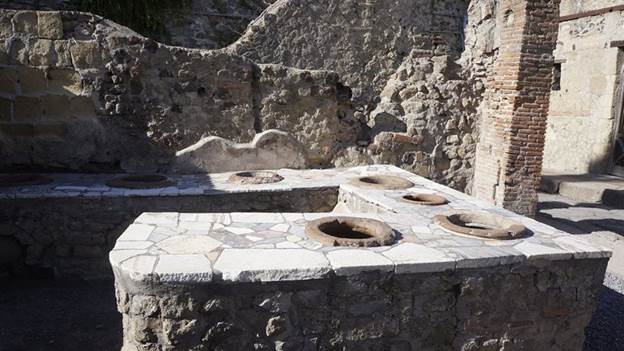Sunday 30th September, Herculeum near Naples 
With the excellent help of our i-pad and Google maps, we rent a car at the ‘Termini’ railway station in Rome, and head South down towards Naples. A long time wish has been to visit Pompei, but we are told that Herculeum (Ercolano) is better for seeing the ancient ruins from the eruption of Vesuvius in 79 A.D. on the waterside of the volcano in a more intact state. (a) It was buried in superheated pyroclastic material when Vesuvius erupted in 79 A.D. Its burial was deep enough to ensure the upper storeys of buildings remained intact, and the hotter ash preserved wooden household objects such as beds and doors and even food. (b) The deep (up to 25 meters) dense tuff formed an airtight seal over Herculaneum for 1,700 years. (c) It was a wealthier town than Pompeii wit an extraordinary density of fine houses, and far more lavish use of coloured marble cladding.  This picture shows how far the ash spread from Mount Vesuvius during the eruption 
Panoramic view over the preserved Herculeum with Mount Vesuvius behind it 
Many skeletons were found in the boat houses (the bottom right hand corner) which was right on the edge of the water at the time 
Herculane and Neptue Mosaic beautifully preserved 
Two of the grander rooms with decorated walls and ceiling 

Walking down the street is a little like still being there with the original inhabitants 
The floor mosaic in the Men’s Baths is almost intact! 
The pots were to keep food warm in the ‘Taverna’ where people came to eat and drink 
A well guided tour with the earphone device gives one such a greater appreciation of how much work has gone into the excavation of this place without having to hang around with a group tour! | 










